The Grocer’s 2017 Top Products Survey, THE definitive guide to the current state of the UK’s grocery industry
Don’t listen to everything the anti-meat lobby tells you about the rise of veganism and vegetarianism on ethical and environmental grounds. Fresh meat may be down, but we’re still a nation of meat eaters.
Particularly if the meat in question has been rubbed in salt and spices, and dried or wrapped in pastry. For sales of meat snacks are booming, up 10% on volumes up 7.1%, and savoury pastries are holding steady, with value up 1.3% on a 0.8% dip in volume sales. In both cases, higher prices are being driven by a shift towards more premium brands.
That’s not to say the vogue for vegetarianism isn’t impacting the savoury pastries market. “Only 4% of the population are vegetarian yet meat-free meals grew by 39% last year,” says Mark Campbell, MD at premium pie brand Higgidy, which has seen sales rise 1% on volumes up 2.5%. “Vegetarian products now make up 60% of our sales. We see massive continued growth in the free from section of the category.”
Campbell attributes much of Higgidy’s growth to veggie NPD such as paneer, coconut and spiced chickpea pies. He’s not the only one. Pukka is one of the sector’s star performers and hot on the heels of Higgidy with value sales up 14.9% to just over £26m, leaving less than £1.5m between the two.
Pukka CEO Deborah Ewan attributes much of the growth to NPD including veggie tikka masala with chickpea & spinach pie, as well as big spend on advertising. “There are 1.2 million people in the UK who are vegetarians, and this is rising year on year,” says Ewan. “As a category we cannot achieve our ambition of ‘pies on more plates’ while excluding such a large proportion of the population.”
It makes sense that more premium players are targeting veggie and ‘flexitarian’ types, given that their more affluent target consumers are more likely to be trying to avoid meat. The tactic has less legs for more mainstream brands, especially if they happen to be named after the meat they contain.
Pork Farms, for example, has seen sales fall 12.6% in the past year, a decline of £1.7m, as the brand has had to compete for prime space in store with everything from sandwiches to salads and sushi in the booming on the go market. Market leader Ginsters is suffering too, having lost 4% of its value and 2.1% of its volumes. But Ginsters is sticking to its guns in its efforts to return to growth.
The brand has spent £3m on an ad campaign highlighting the fact its products are baked in Cornwall and is unashamedly going after meat eaters by putting more meat and filling in its slices and launching NPD including a Mexican Chilli Beef slice.
“Retailers always look to brands to demonstrate category leadership to help grow the savoury pastry category,” says Ginsters’ marketing director Mike Smith.”Brands like Ginsters, with their strong heritage, reputation for quality and investment behind the brand, are seen to bring consumers to the category and help grow sales.”

Number two brand Wall’s has reversed value decline in the last year - it’s up 1.3% - partly by running its biggest ever on-pack promotion, which ended in September. With the strapline ‘Helping Hand’ shoppers were given the chance to win prizes including two-for-one days out and two-for-one Odeon cinema tickets. “The campaign was a huge success and resulted in around 3,000 redemptions every day,” says Kim Burgess, head of markets at Addo Food Group, whose brands include Wall’s and Pork Farms.
Of course, over in meat snacks there’s no escaping the fact they’re comprised purely of animal flesh. So brands are ramping up their marketing, advertising and innovation to ensure they hit their target carnivorous consumer group. Market leader Peperami (up a whopping 12.9% on volumes up 11.1%) is doing this by tapping one of the key trends in grocery of the past few years.
“Launching one of the most protein rich meat snacks in the chilled category has resulted in the successful recruitment of new shoppers - younger males,” says Peperami category & shopper marketing manager Kieran Bansi, pointing to the launch of beef Peperami in classic and peppered beef flavours in March. “We predict Peperami beef and Peperami snack packs will continue to attract this audience.”
While consumers’ ongoing health kick is driving some to go meat-free in savoury pastries, it’s also inspiring some to eat more meat snacks, as they switch from high carb bagged snacks to protein rich products. “Healthy eating has become embedded in the UK’s eating habits, resulting in an evolution of what we are eating with protein consumption up 3% in the last four years,” adds Bansi.
With £1.6m wiped off its value in the last year and with sales down double digits, the third best-selling meat snack brand, Wild West, is also going after new protein sources to drive sales. The brand launched a salmon jerky in October and added a fajita chicken jerky to its portfolio in November, both of which are listed at BP and M&S forecourts.
“Trends in snacking suggest that jerky and biltong will be well placed to drive long-term category value for retailers, fitting with the greater shift we are seeing towards health and wellness,” says James Newitt, MD at Meatsnacks Group. “For 2018 we will continue to use communication both on and offline as a key method to reach our consumers as there’s still an education piece required to bring new consumers to the category.”
Such communication will become increasingly important as cost pressures continue to mount. After all, if brands are forced to increase prices or cut pack sizes to offset inflation, their marketing departments will need to hone the message they’re communicating to the consumers they’re asking to pay more .
Shrinkflation is already happening. “Market leader Peperami reduced their pack sizes while keeping unit price the same, which shows how manufacturers are using shrinkflation to combat cost increases,” says Nielsen senior client manager Hannah Chapman, referring to our April revelation that a standard Peperami was being sliced from 25 grams to 22.5 grams.
A spokeswoman for the brand put this down to a combination of the pound’s weakness following the Brexit vote and spiralling commodity costs at the time. Such pressures continue, says Higgidy’s Campbell. “The last year has been a tough environment with commodity price increases and changes to retailer promotional strategies creating a trickier environment to navigate.”
TOP LAUNCH
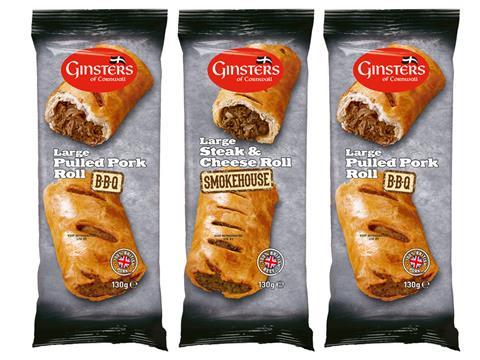
Smokehouse & BBQ Rolls by Ginsters
We liked this duo from the market leader so much, we declared them both our Top Launches of the year for savoury pastries & meat snacks. Not only are they unashamedly meaty in spite of all the talk of vegetarianism and flexitarianism right now, but both the Smokehouse Steak & Cheese and BBQ Pulled Pork Rolls are likely to appeal to hungry truckers looking for something to fill them up at the motorway forecourt. And that’s who they’re going for, isn’t it?
The Grocer Top Products Survey 2017: Up!

A plummeting pound has sent food & drink prices flying, with 93 of the 114 sectors analysed in our annual roundup inflating
- 1
- 2
- 3
- 4
- 5
- 6
- 7
- 8
- 9
- 10
- 11
- 12
- 13
- 14
- 15
- 16
- 17
- 18
- 19
- 20
- 21
- 22
- 23
- 24
- 25
- 26
- 27
- 28
- 29
- 30
- 31
- 32
- 33
- 34
- 35
- 36
- 37
- 38
- 39
- 40
- 41
- 42
- 43
 Currently
reading
Currently
reading
Savoury pastries & meat snacks: veggie in vogue
- 45
- 46
- 47
- 48
- 49
- 50



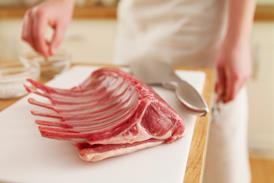






































































































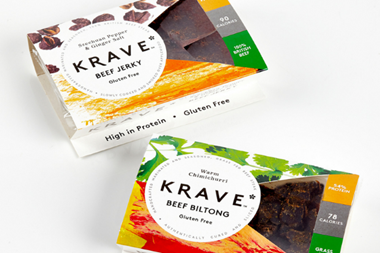
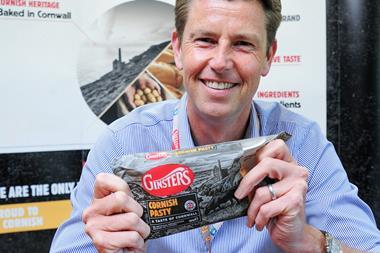
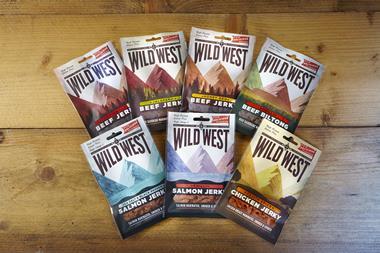

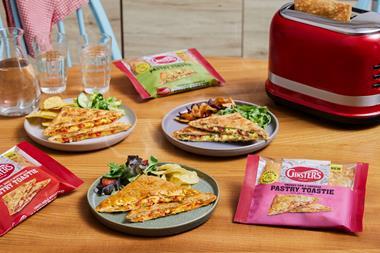







No comments yet